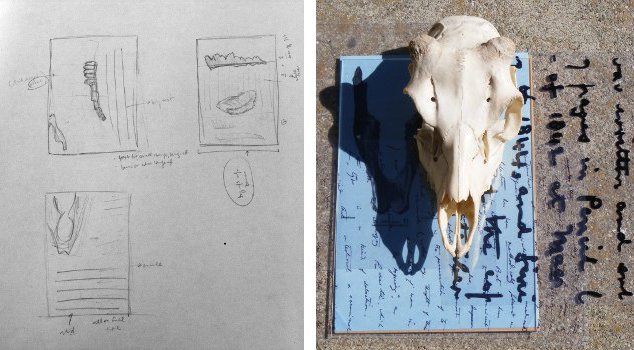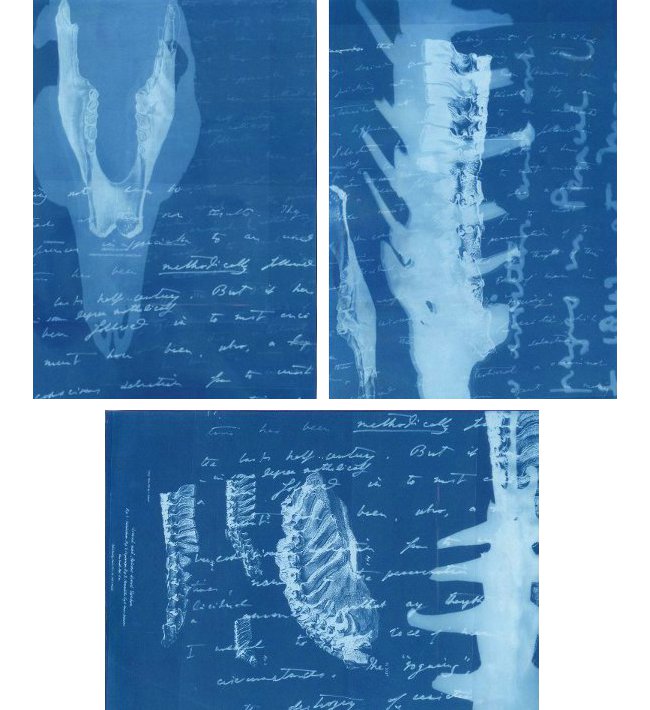
Time: 30 min +
What you need:
-Animal bones
-Access to a computer and printer
-Transparency sheets
-Sunprint paper
-Tub of water
-Acrylic sheets
-Cardboard
The notebooks of Charles Darwin, the 19th century naturalist, are chock full of detailed drawings and observations on the animal evolution that he studied. For this project, we decided to combine the unique qualities of Sunprints with a collage-like, field note style. Using transparencies and animal bones, we experimented with layering, varied exposure times, and the angle of the sun throughout the day.

Animal bones are stunningly beautiful objects. As the sun comes down at different angles, their lines and holes create fascinating shadows. By themselves, they make great prints. Because of the bones’ three-dimensional qualities, transparencies placed underneath them still show up.


As we became aware of the possibility of printing multiple things at once, we began to use varied exposure times for the objects, giving the prints the appearance of depth. Using acrylics on top of layers of transparencies allowed us to move the objects in the middle of printing, without messing up other elements.


From here we moved into the full blown collage prints, using multiple objects and exposure times. It was helpful to plan out what to use and how long to leave each element on before starting. The final results were exciting!

The best part of this project was how many different directions were available. The individual components of bone and transparency can be combined in a plethora of ways. By leaving some objects on for shorter exposure times than others, a scale of blue and white develops, instead of the traditional all-high-contrast prints. Even the time of day the pieces were done had an effect, since the angle and brightness of the sun changes the shadow cast by the bone. If you’re working with educational groups, this is a great way to learn about the sun’s movement across the sky, as the effect of angle and height are clearly visible in the elongation of the image left on the Sunprint.

Sources: All images used on transparencies come originally from http://darwin-online.org.uk/
Tags: Art, Scientists